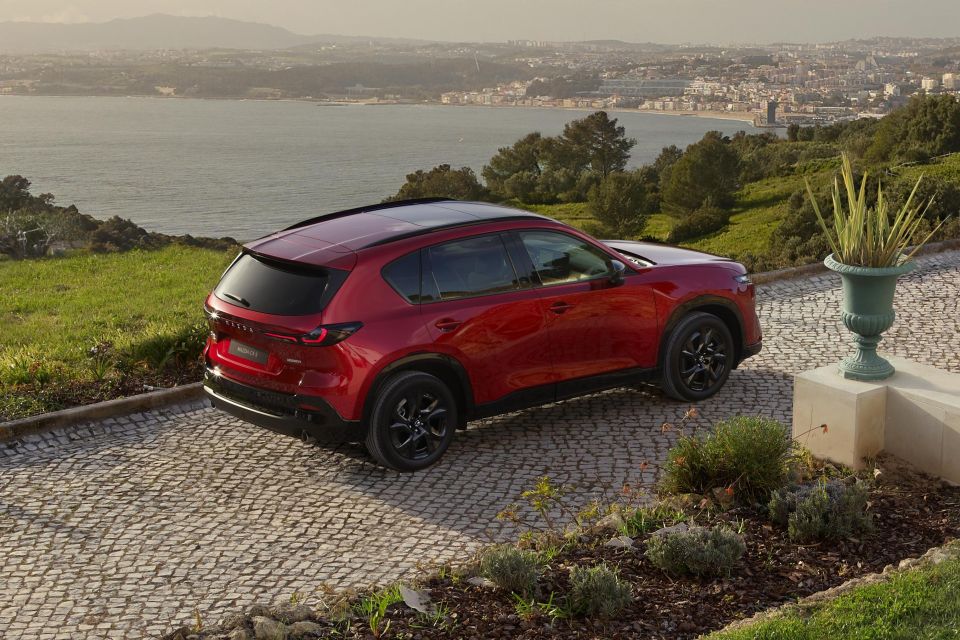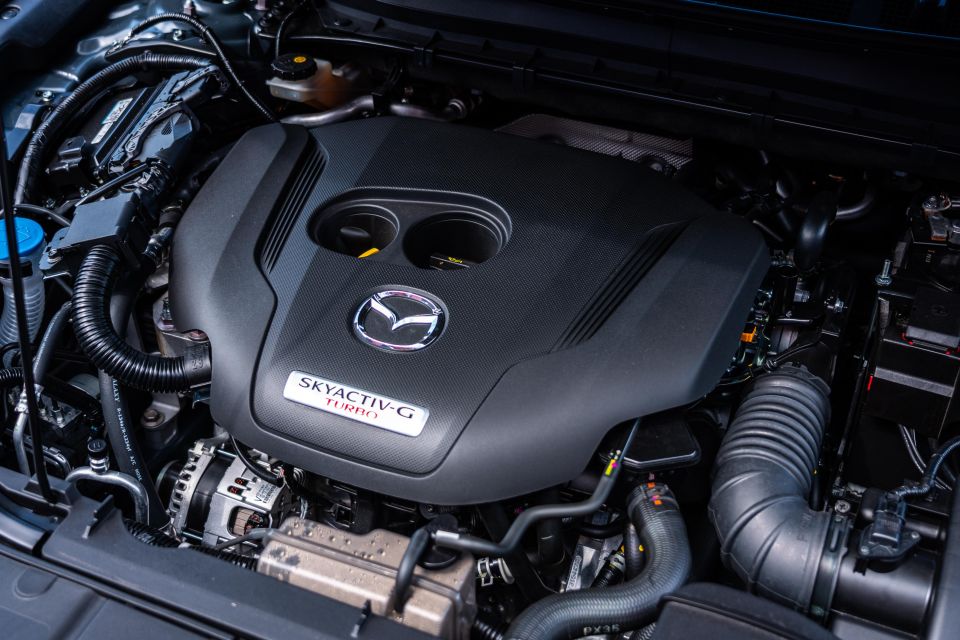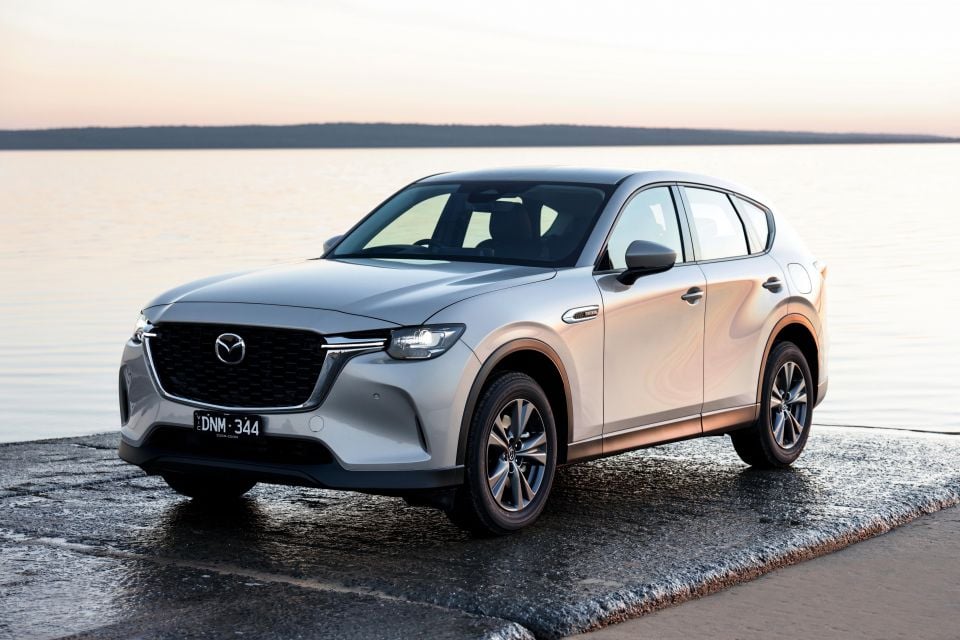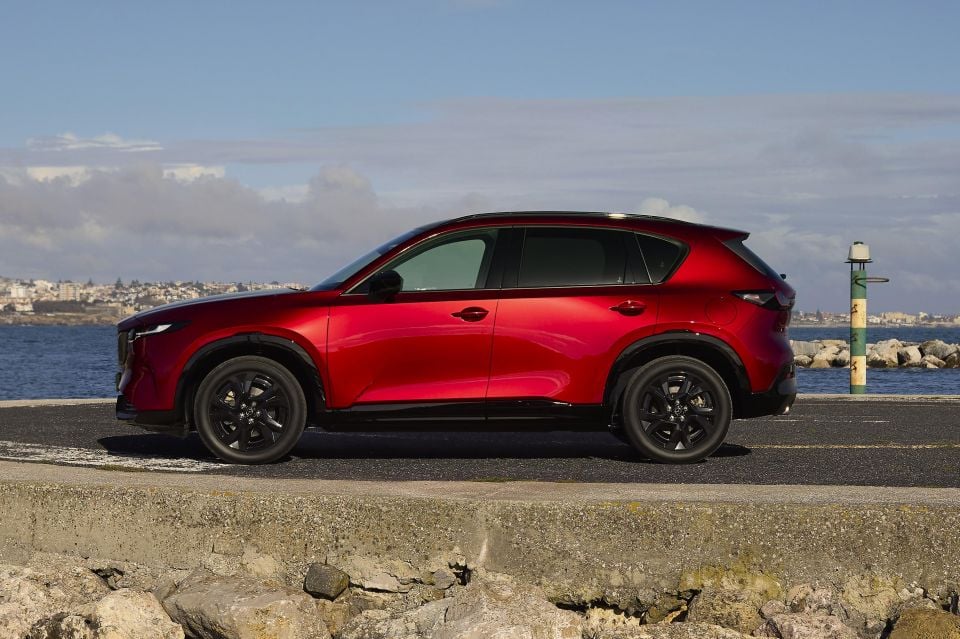The third-generation Mazda CX-5 – revealed this week and expected to arrive in Australia in the second half of 2026 – will come with a carryover powertrain. Unfortunately, it’s not the punchy turbo four that makes Mazda’s popular mid-size SUV rather unique among its rivals.
In a segment dominated by small-displacement turbocharged four-cylinder petrol engines and larger naturally aspirated ones, the beefy 170kW/420Nm 2.5-litre turbo-petrol engine that powers G35 variants has made the current CX-5 one of this market’s sportier medium SUVs.
The new-generation model, however, will carry over only the CX-5’s naturally aspirated 2.5-litre four, which will also bring a slight reduction in power and torque to 132kW and 242Nm.
So, what can buyers looking for a more powerful Mazda SUV do?
Hundreds of new car deals are available through CarExpert right now. Get the experts on your side and score a great deal. Browse now.

According to Mazda, the answer is to wait for the hybrid version of the new CX-5, which is confirmed for a US launch in 2027, and a local launch at an unspecified time.
“The hybrid system will have performance that is comparable to or exceeding the turbo powertrain,” Stefan Meisterfeld, VP of strategic planning for Mazda North American Operations, told CarBuzz in a statement.
Mazda hasn’t confirmed outputs for the electrified CX-5, which will employ the Japanese brand’s new Skyactiv-Z 2.5-litre four-cylinder engine in conjunction with a hybrid system developed in-house.
This new engine, which will share components with the brand’s existing 2.5-litre mill, will offer greater performance and fuel economy than before, while also meeting strict Euro 7 emissions regulations in Europe, and both LEV4 and Tier 4 regulations in North America.

Mazda claims the Skyactiv-Z engine achieves lower emissions without any drops in output, as opposed to conventional engines which it says would result in a 30 per cent output reduction.
The Skyactiv-G Turbo will live on in other Mazda SUVs… but unfortunately they aren’t sold here.
“We will continue to offer the turbo engine in models such as the CX-50 and CX-30,” Mr Meisterfeld confirmed.
“We will see what our customers want, and provide them the right vehicles.”
The CX-50 is a mid-size Mazda SUV offered only in left-hand drive markets, while the CX-30 2.5T is produced only in Mexico in left-hand drive – alongside Mazda 3s equipped with the same engine, which are also forbidden fruit for our market.

The 2.5-litre turbo was previously offered in the CX-9, in which it debuted in 2016, and the Mazda 6, both of which have been discontinued.
Mazda Australia says there’ll be healthy supply of the outgoing CX-5 range up until the new model’s launch, but beyond that buyers after a powerful turbocharged mid-size SUV in Australia will need to look at rivals like the Volkswagen Tiguan.
They could also look to Mazda’s own CX-60 (pictured above), with its available 3.3-litre inline six-cylinder turbo engine producing more power and torque (209kW and 450Nm) while also achieving superior fuel economy (7.4L/100km versus 8.2L/100km).
While the new CX-5 will no longer have a turbocharged flagship engine, the introduction of a hybrid powertrain will allow it to directly take on popular rivals like the Toyota RAV4 Hybrid and Nissan X-Trail e-Power, among a flood of other electrified mid-size crossover SUVs.

At 4690mm long, 1860mm wide and 1695mm tall, the new CX-5 is 115mm longer, 15mm wider than the existing model, which remains Australia’s second most popular medium SUV despite dating back to 2016.
It also rides on a wheelbase that’s 115mm longer at 2815mm, and continues to incorporate MacPherson strut front and multi-link rear suspension.
Styling is evolutionary outside but somewhat more revolutionary inside, where many physical controls have been removed and there’s a central multimedia touchscreen measuring a whopping 15.6 inches.
MORE: 2026 Mazda CX-5 brings fresher styling, familiar engine but no hybrid… yet

